
Difficult to perceive the canvas “Romans under Yoke” belongs to the academician Charles Gleir. The painting has a more complete title in the German interpretation of “Die Helvetier zwingen die Römer unter dem Joch hindurch”, otherwise: “The Helvetians compel the Romans to pass under the yoke.” The plot reflects a historical event, prescribed by some historians to the consequences of the battle of Arauzion, and others to the Battle of Teutoburg.
However, the author has displayed a more concrete and local action – the battle of the French Agen. This event 107 years BC ended with the defeat of the Romans by the Helvetians – the Celtic tribe in the territory of Gaul, the most numerous – formed the basis of the historical plot of the canvas. Narration is heavy, very dull and sad. Half-wild Helvetians, having gained supremacy over Roman soldiers, appeared in the picture as jubilant and weighty. The one with the bull’s head on the right is clearly happy and does not hide his rage, celebrating the victory, raising his hands to the naked prisoners of war. In the background, Divico, the leader, under whose command the Roman army was defeated, is evidently visible. He is portrayed as a rider in a complex outfit.
Diviko’s gaze is turned to the old men and women praying for mercy. Among the crowd of winners scurrying children, pale and miserable. One of the guys tries to hold the boy, who saw his father in the captured men. The impregnation of a child’s misfortune gives work a synthesis and a special taste of salt and grief. The prisoners themselves are beautiful. Their bodies are muscular, the skin plays with elastic lines of nature in the sunlight, excellent soldiers, strong and proud. They are brave, but weak in their helplessness to save their loved ones. Helvetam did not know that Caesar would soon raise his army again to destroy them. In the meantime, the joy and grin from the victory won is played on the faces of the savages. Oskal, written in oil, warm colors of a warm day. The current letter of Charles Glaire makes you break away from the plot.
The technique is so virtuoso that you stop taking root in the essence of the plot. I want to consider every smear of work, a mixture of colors in the shade, the transfer of glare and the volume of objects. It is difficult to imagine that the artist faced a lot of tasks – to tear a piece from history, create a sketch, images, grief and rejoicing to unite, prescribe a distant horizon plan, a front picture saturated with characters, children, old people, wooden shackles, coupled with the strength of muscles, … Charles was able to expound the essence of the moment of history, which for the contemporary may seem prehistoric and fantastic, to transfer the grief of defeat, to feel the joy of victory, to pass through the brush, as through his fingers, the sand is already forgotten s times.
 Morning on the Kulikovo field by Alexander Bubnov
Morning on the Kulikovo field by Alexander Bubnov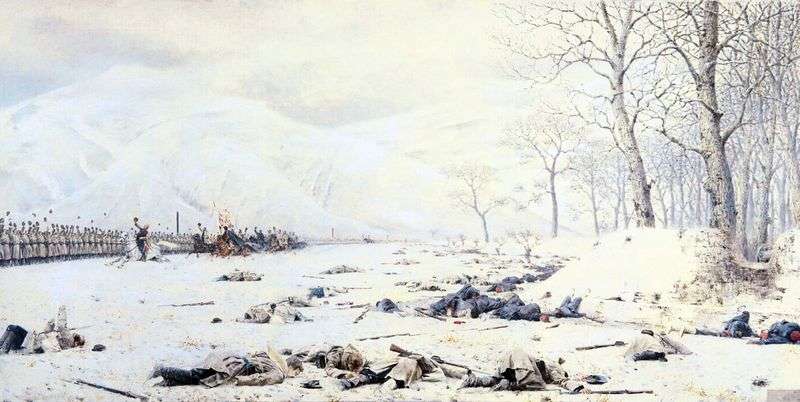 Shipka-Sheinovo. Skobelev under Shipka by Vasily Vereshchagin
Shipka-Sheinovo. Skobelev under Shipka by Vasily Vereshchagin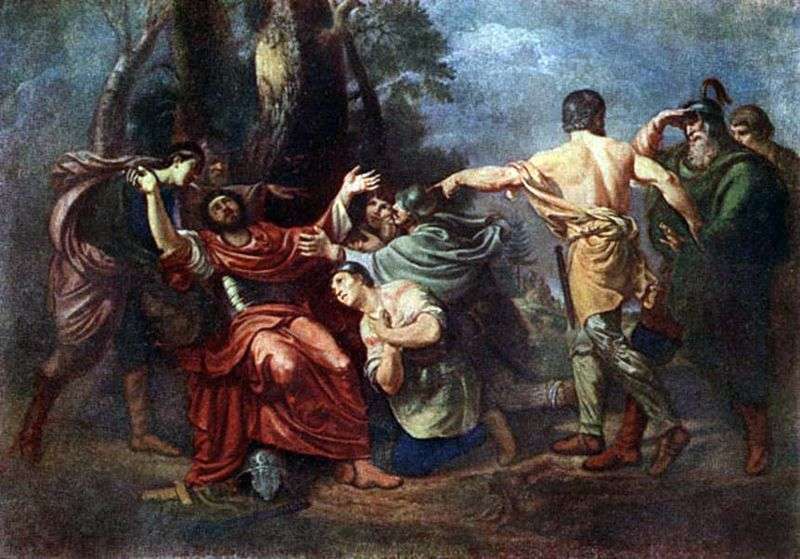 Prince Dimitry Donskoy after the Battle of Kulikovo by Orest of Kiprensky
Prince Dimitry Donskoy after the Battle of Kulikovo by Orest of Kiprensky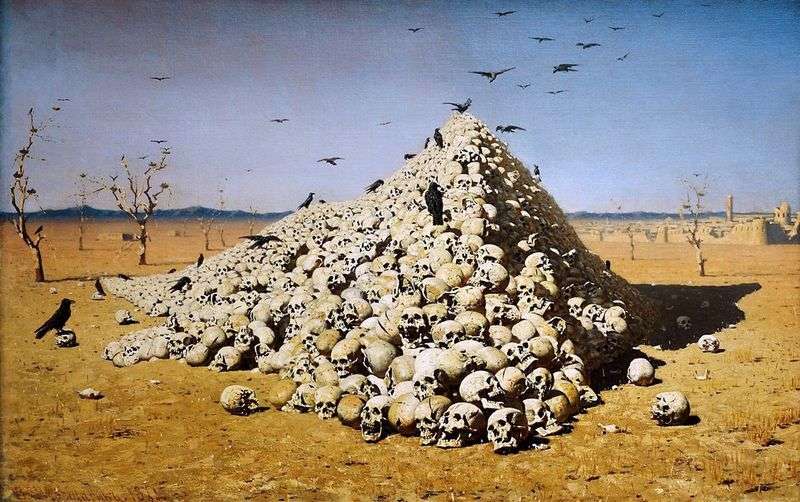 Apotheosis of the war by Vasily Vereshchagin
Apotheosis of the war by Vasily Vereshchagin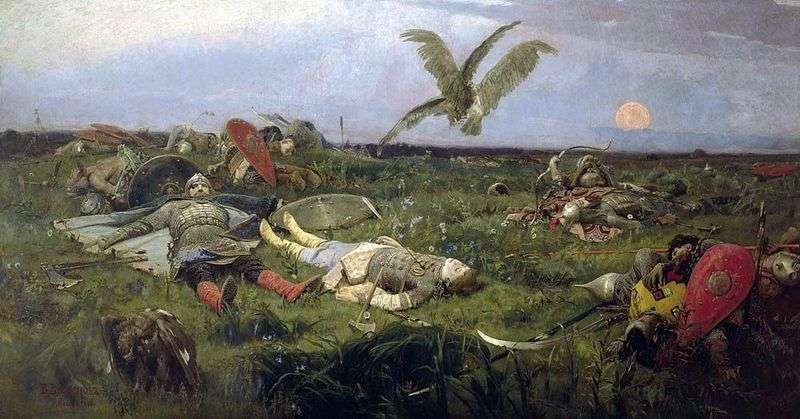 After the massacre of Igor Svyatoslavich with the Polovtsians by Victor Vasnetsov
After the massacre of Igor Svyatoslavich with the Polovtsians by Victor Vasnetsov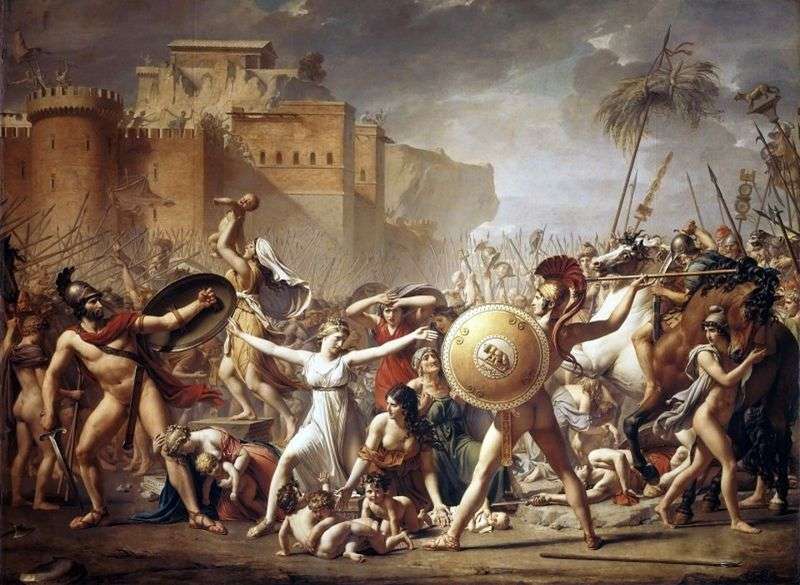 Sabine women who stop the battle by Jacques Louis David
Sabine women who stop the battle by Jacques Louis David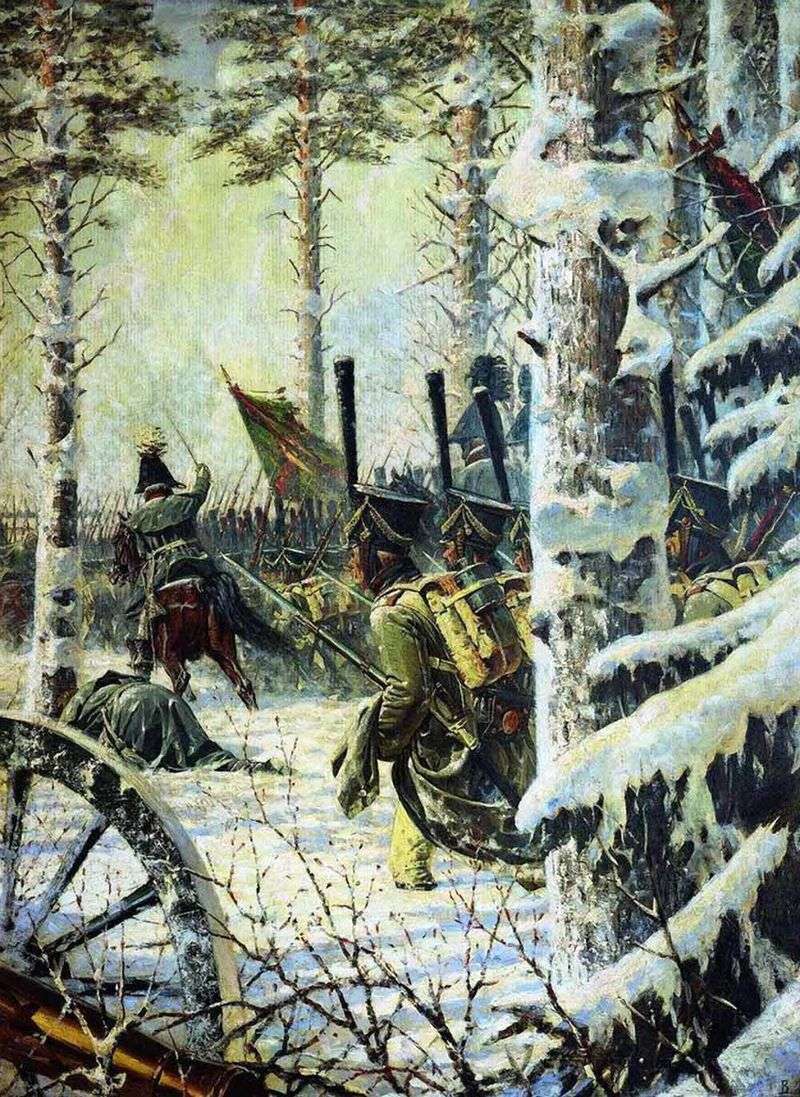 With bayonets! Hooray! Hooray! by Vasily Vereshchagin
With bayonets! Hooray! Hooray! by Vasily Vereshchagin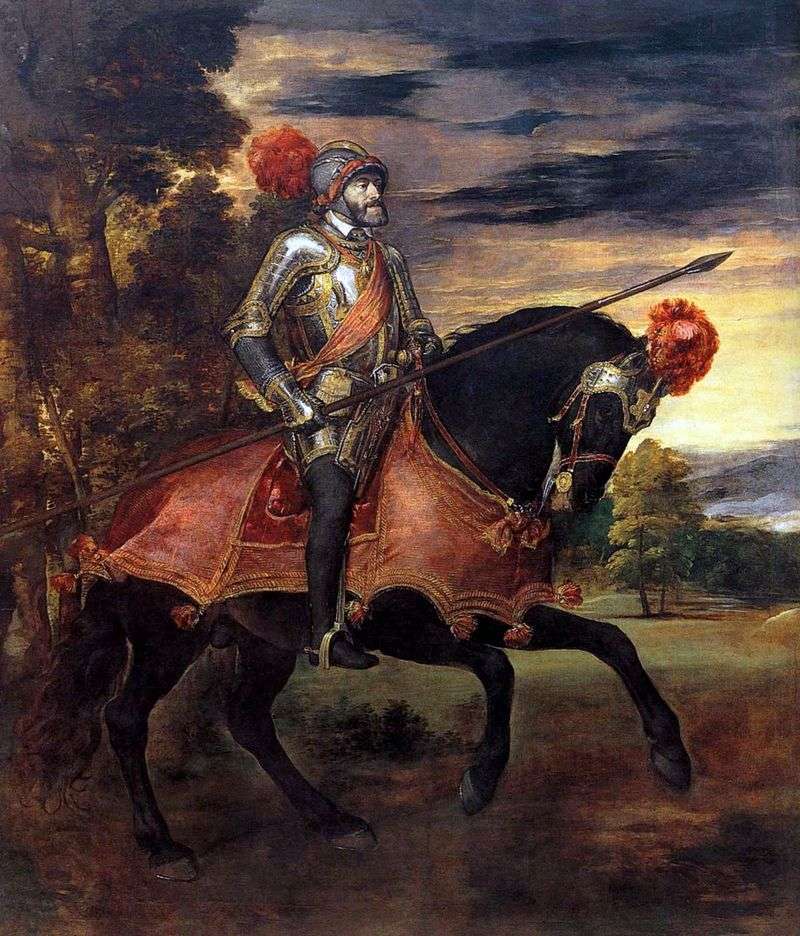 Equestrian portrait of Emperor Charles V by Titian Vecellio
Equestrian portrait of Emperor Charles V by Titian Vecellio